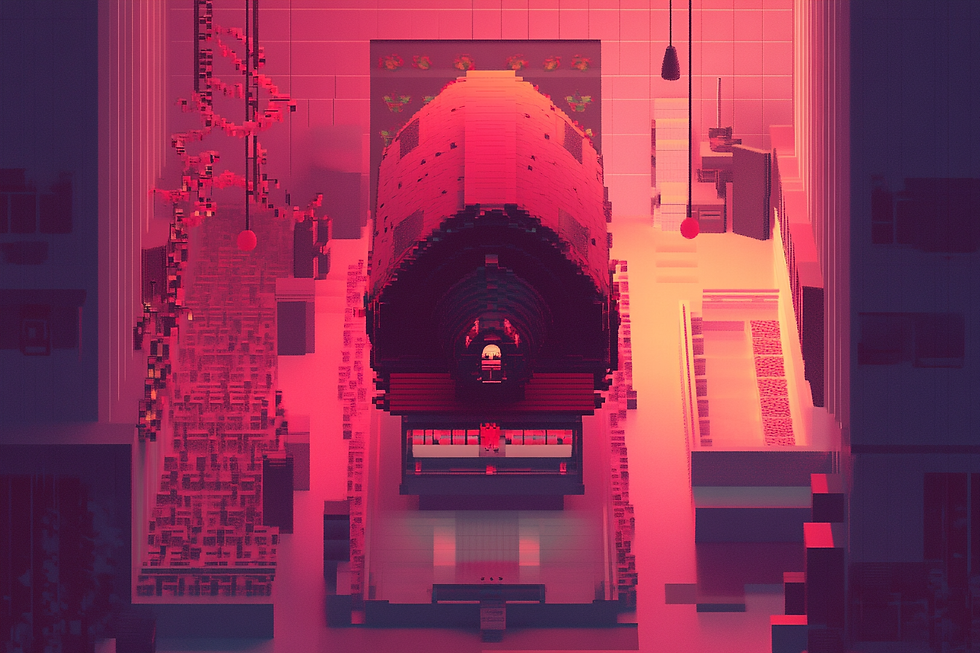While You Were Sleeping, AI Just Learned to Draw Your Wildest Dreams (And Your Worst Nightmares)
- James Garner
- Aug 10
- 3 min read
Updated: Aug 11

Grok Imagine's "spicy mode" isn't just changing content creation—it's exposing the terrifying gap between those riding the AI wave and those drowning in digital ignorance
Right, let's have a proper chat about something that's been rattling around in my brain like a marble in a biscuit tin. While most of us were busy arguing about whether pineapple belongs on pizza (it absolutely does, fight me), Elon Musk's xAI quietly dropped a creative bombshell that's about to reshape how we think about work and creativity.
Grok Imagine launched this month with all the subtlety of a brick through a greenhouse window, and frankly, most people haven't even noticed the glass breaking yet. This isn't just another AI image generator—it's a crystal-clear demonstration of the growing chasm between those who embrace emerging technology and those who remain blissfully unaware that the ground beneath their feet is shifting.
Here's the kicker: Grok Imagine comes with "spicy mode"—essentially giving users the ability to generate NSFW content, including partial nudity. While other AI companies are wrapping their tools in more safety nets than a circus trapeze act, xAI is taking the opposite approach, positioning itself as the unfiltered, boundary-pushing alternative.
The Great AI Awareness Divide
Here's a statistic that should make you spit out your morning brew: according to Pew Research, only 30% of Americans can correctly identify common uses of AI in their daily lives. That's right—seven out of ten people are walking around completely oblivious to the artificial intelligence already embedded in their email spam filters and shopping suggestions.
The numbers get even more sobering: While 53% of people with postgraduate degrees can spot AI at work, only 14% of those with high school education can do the same. Upper-income Americans are more than three times as likely to have high AI awareness compared to their lower-income counterparts.
This isn't just a harmless knowledge gap—it's a bloody great chasm that's about to swallow entire industries whole. The World Economic Forum reports that more than one in five US workers are genuinely worried they might lose their jobs to emerging technology—what researchers call FOBO (Fear of Becoming Obsolete).
The Unfiltered Future of Project Delivery
What makes Grok Imagine different is its philosophical approach. The technical specs are impressive—text prompts transformed into 15-second videos with native audio, delivered in seconds. But it's the creative freedom that's really turning heads.
For those of us in the project delivery game, the implications are interesting. What used to take days or weeks—concept development, storyboarding, initial video production—can now happen in minutes. Imagine briefing a client and generating multiple video mockups in real-time during the meeting.
But here's the rub: only if you're aware these tools exist and know how to use them effectively. While forward-thinking agencies are already integrating AI tools into their workflows, their competitors are still operating with traditional timelines. It's like watching a Formula 1 car race against a horse and cart.
The Great Separation
We're witnessing the emergence of what I call the "AI Aristocracy"—professionals who understand and leverage AI tools, leaving everyone else scrambling with increasingly outdated skill sets. The McKinsey research shows AI is creating a two-tier system where those who can work alongside AI thrive, while those who can't get left behind.
The separation is happening across multiple dimensions: speed, creative possibilities, client expectations, and economic advantage. AI-savvy professionals are delivering work faster, exploring impossible creative scenarios, and meeting elevated client expectations that force everyone else to adapt or lose business.
What You Can Actually Do About It
The most successful professionals aren't the ones with the most technical expertise—they're the ones who understand how to blend human creativity with AI capabilities. They're experimenting over perfection, integrating AI into existing workflows, educating clients, and treating AI literacy like any other professional skill.
This isn't about AI replacing creativity—it's about professionals who've mastered AI replacing those who haven't. The technology isn't the threat—the competition from people who've embraced it is.
So while everyone else is still figuring out why their Netflix recommendations are so eerily accurate, maybe it's time you started paying attention to what's actually happening in the world of AI. Because whether you're ready or not, the future of creative work is already here—and it's got a rather cheeky sense of humour.
Don't say I didn't warn you.

Comments